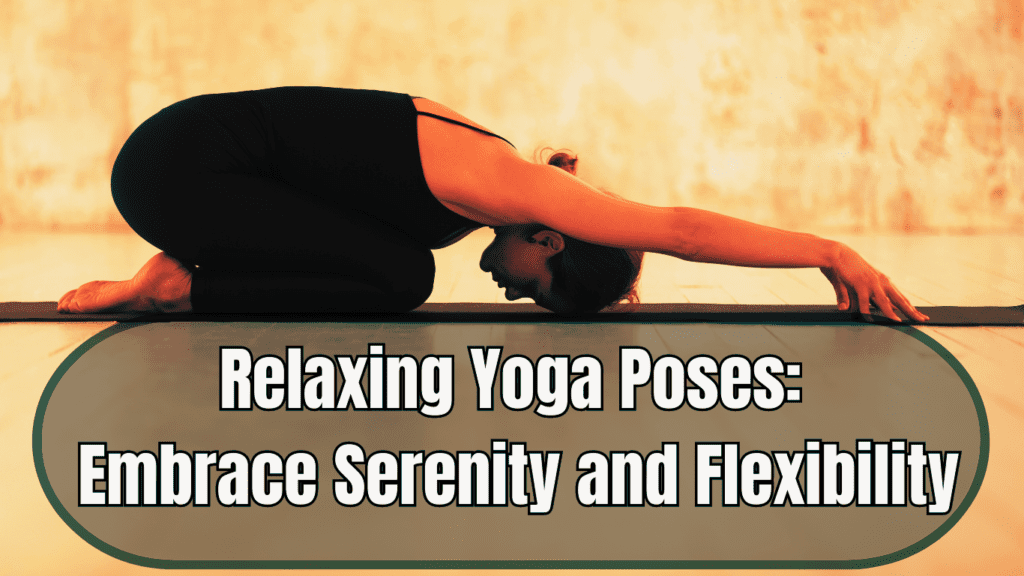Yoga After Workout: Crafting the Perfect Introduction
In this article, we will explore the numerous benefits of yoga after workout, providing practical tips and exercises to enhance your recovery and overall fitness.
When it comes to enhancing post-workout recovery, yoga has become a popular practice for fitness enthusiasts and professionals alike. Whether you’re a seasoned athlete or just starting on your fitness journey, incorporating yoga after your workout can provide numerous benefits beyond what traditional stretching or cool-downs offer. Let’s explore why yoga is an essential practice for anyone looking to improve recovery, flexibility, and overall well-being.
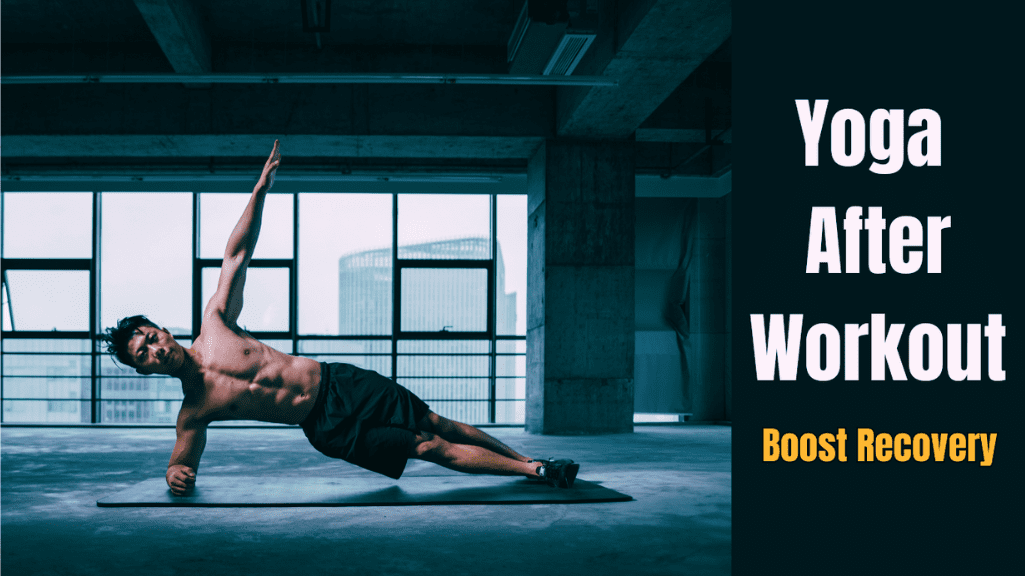
Why Yoga After Your Workout?
What is Yoga?
Yoga is more than just a physical practice; it’s a holistic approach to improving flexibility, relieving tension, and enhancing recovery. It combines physical postures, breath control, and meditation to create a well-rounded approach to fitness and mental health.
Complementing a Gym Session
After a workout session, your muscles are in need of relaxation and restoration – and yoga after workout provides the perfect complement. Engaging in yoga helps your body recover efficiently, preventing tightness and encouraging optimal muscle function.
Subscribe And Get Our Free E-Book:Unlocking The Power Of Nutrition-Supplements, Substitutes, and Superfoods!
Benefits of Yoga When Done After Workout Cession
Physical Recovery
Yoga focuses on gentle stretching, which is essential for muscle recovery. Intense workouts can cause lactic acid build-up, inflammation, and soreness. Practicing yoga after your workout allows your muscles to lengthen, reducing tightness and discomfort.
- Reduced Muscle Soreness
Gentle yoga postures like child’s pose, seated forward folds, and restorative stretches release tension and alleviate soreness. - Improved Flexibility
Yoga increases flexibility by targeting deep muscle tissues, ligaments, and joints, ensuring better range of motion.
Mental Benefits
Yoga isn’t just about physical recovery—it’s also about calming the mind and achieving a state of mental balance. Intense physical workouts can lead to stress and mental fatigue. Engaging in yoga when done after the workout helps quiet the mind and improve focus.
- Stress Reduction
Through breath control (pranayama) and mindfulness, yoga after workout helps reduce cortisol levels, enabling you to manage stress more effectively. - Improved Concentration
Practicing mindfulness during yoga enhances concentration, encouraging a more centered mental state.
Boosting Overall Well-being
Yoga promotes both physical and emotional well-being, balancing recovery with mental clarity. By engaging in yoga after your workout, you help prevent injuries and maintain flexibility for optimal performance.
Benefits of Yoga After Workout
Incorporating yoga after the one is done with your workout has become a popular practice among fitness enthusiasts and athletes looking to optimize recovery and improve overall well-being. Whether you’ve just completed a high-intensity weightlifting session or an endurance workout, engaging in yoga after your workout offers a range of physical and mental benefits. By blending mindful movements, breath control, and relaxation, yoga after workout can help alleviate soreness, reduce stress, and promote long-term health. Let’s explore how incorporating yoga into your post-workout routine can support your recovery and enhance your performance.

In-Depth Exploration of Benefits
Physical Benefits
Engaging in yoga after workout is a powerful way to address muscle tightness and promote physical recovery. After rigorous physical activity, the body undergoes various stresses, leading to muscle fatigue and reduced flexibility. Yoga helps alleviate these effects by focusing on gentle stretches and controlled movements that enhance recovery and overall movement.
Improved Flexibility
One of the most immediate benefits of yoga after workout is the improvement in flexibility. After heavy lifting or intense exercise, muscles become tense and restricted. Engaging in post-workout yoga encourages deep stretching, which helps elongate muscles and reduce tightness. Poses like seated forward bends and pigeon pose focus on key areas, ensuring that your body moves smoothly and freely.
Reduced Muscle Soreness
Intense exercise can lead to muscle soreness due to the buildup of lactic acid and inflammation. Yoga helps flush out these toxins by increasing blood flow and encouraging recovery. By promoting gentle, low-impact movements, yoga assists in speeding up the healing process, minimizing discomfort and muscle fatigue.
Enhanced Blood Flow
Gentle yoga movements stimulate circulation, bringing oxygen and nutrients to the muscles. This increased blood flow enhances recovery by delivering essential nutrients to tissues, helping the body repair itself more efficiently. After a workout, gentle stretches and controlled breathing improve the flow of vital resources throughout the body.
Mental Benefits
Beyond physical recovery, yoga after workout plays a significant role in promoting mental well-being and reducing stress. Intense physical activity often leaves the mind fatigued, while yoga provides a calming practice that restores mental clarity and emotional balance.
Stress Reduction
High-intensity training can elevate cortisol levels, increasing feelings of stress. Yoga offers a method to counteract this by promoting mindfulness and relaxation. Gentle poses combined with deep breathing encourage a sense of calm, helping you transition from a high-energy workout to a more peaceful state of mind.
Breath Control
Breathing exercises during yoga after workout help regulate the nervous system, improving emotional stability and mental focus. Controlled, slow breaths guide your body into a state of relaxation, allowing for a clearer mind and reduced anxiety. This practice is especially beneficial in the recovery phase, as it helps manage both physical and mental fatigue.
Overall Well-being
Incorporating yoga into your fitness routine not only supports short-term recovery but also enhances long-term well-being. By focusing on proper alignment, injury prevention, and mindfulness, yoga ensures that your body functions efficiently over time.
Prevents Injury
One of the key advantages of yoga after the gym session is its role in injury prevention. Tight muscles and imbalances can lead to strain or overuse injuries. Post-workout yoga routines address these issues by emphasizing alignment and controlled movements, reducing the likelihood of musculoskeletal injuries.
Promotes Mind-Body Connection
Focusing on breath and movement during yoga enhances your awareness of how your body moves. This greater body awareness translates into more balanced movements in daily activities and other physical pursuits, improving both physical and mental performance.
Yoga’s Dual Impact: Physical and Mental Recovery Benefits After Workouts Chart:
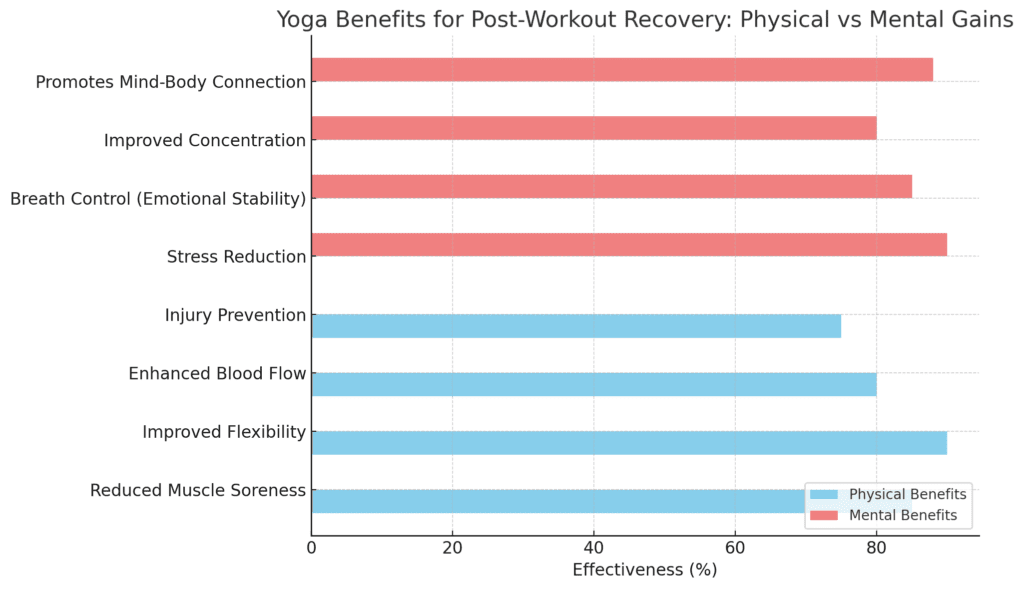
Boost Recovery With Full Body Yoga Stretching Video
Types of Yoga to Do After a Workout
Incorporating yoga after workout into your fitness routine can significantly improve your recovery process, helping you restore both physical and mental balance. Whether you’re recovering from intense strength training, cardio sessions, or a combination of both, choosing the right type of yoga can enhance flexibility, reduce muscle soreness, and promote relaxation. Below, we explore various styles of yoga after workout that cater to different needs, ensuring you achieve optimal recovery.
Hatha Yoga – A Gentle and Restorative Approach
Hatha yoga is a classic form of yoga that emphasizes holding poses for extended periods while focusing on breath control and alignment. This style provides a slower-paced, gentle approach to post-workout recovery, making it particularly suitable for beginners or those recovering from intense physical activity.
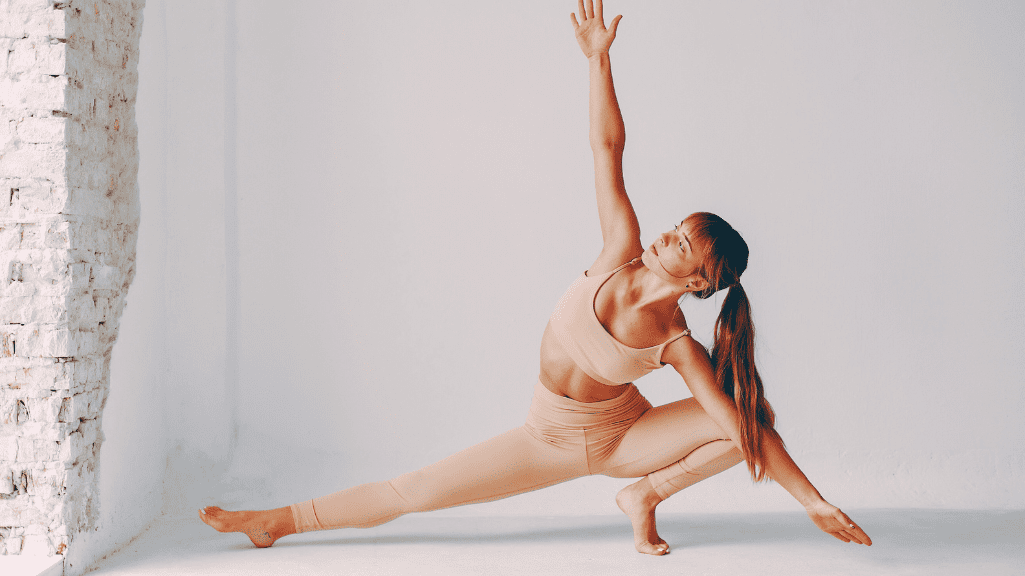
Description
Hatha yoga typically involves foundational postures and sequences that are performed slowly, offering deep muscle stretching. This style allows for an intentional focus on breath, body awareness, and mindfulness, which encourages full relaxation. Yoga after workout in this form is perfect for soothing tired muscles and reducing overall tension.
Benefits
- Ideal for beginners or individuals new to yoga and looking for a restorative experience.
- Encourages deep muscle release, which helps in relieving stiffness after weightlifting or high-impact workouts.
- Helps calm the nervous system, reducing post-workout stress and promoting balance.
Yin Yoga – Deep Tissue Recovery
For those who engage in intense strength training or activities that strain deeper tissues like ligaments and fascia, yin yoga offers a highly effective recovery method. This style focuses on holding poses for extended periods (often 3 to 5 minutes) to target deeper connective tissues.

Description
Yin yoga involves passive, supported poses that are aimed at reaching the deeper layers of muscle and connective tissues. These stretches are sustained for longer durations, allowing the body to fully release tension and recover from deep within. Yoga after workout in this form helps improve flexibility and mobility in areas typically neglected by more active styles.
Benefits
- Focuses on releasing tension in ligaments, fascia, and deep muscles, which are commonly affected by heavy lifting or repetitive movements.
- Reduces muscle tightness and enhances joint flexibility, making it excellent for athletes and fitness enthusiasts seeking recovery from intense activity.
- Helps prevent injuries by maintaining the health of connective tissues that often undergo stress during physical exercise.
Vinyasa Yoga – Active Recovery with Fluid Movements
If you prefer a more dynamic approach to recovery, Vinyasa yoga is an excellent choice. Known for its seamless flow of poses connected to breath, this style provides an active recovery session that keeps your body moving while still promoting flexibility and relaxation.
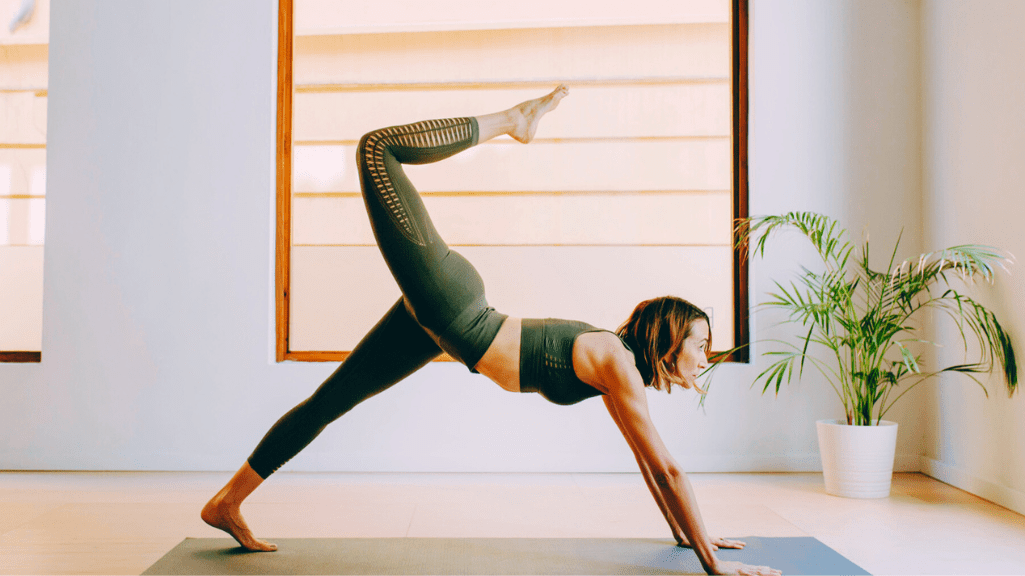
Description
Vinyasa yoga involves a continuous, flowing sequence of postures, where each movement is linked to a breath. The practice is more active than Hatha or Yin yoga, but it provides a balanced approach to recovery by encouraging gentle movement. Yoga after workout with Vinyasa maintains flexibility while ensuring muscles receive the necessary attention for optimal recovery.
Benefits
- Combines gentle movements with mindful breathwork to reduce muscle tightness and stiffness.
- Suitable for those who enjoy staying active during recovery, preventing stagnation in movement.
- Enhances circulation, allowing nutrients and oxygen to flow more effectively to muscles for quicker healing.
Restorative Yoga – Deep Relaxation and Stress Relief
When you’ve undergone a particularly intense workout or training session, your body craves passive recovery. Restorative yoga focuses on completely supported, slow-moving poses that help reduce physical stress and encourage full-body relaxation.
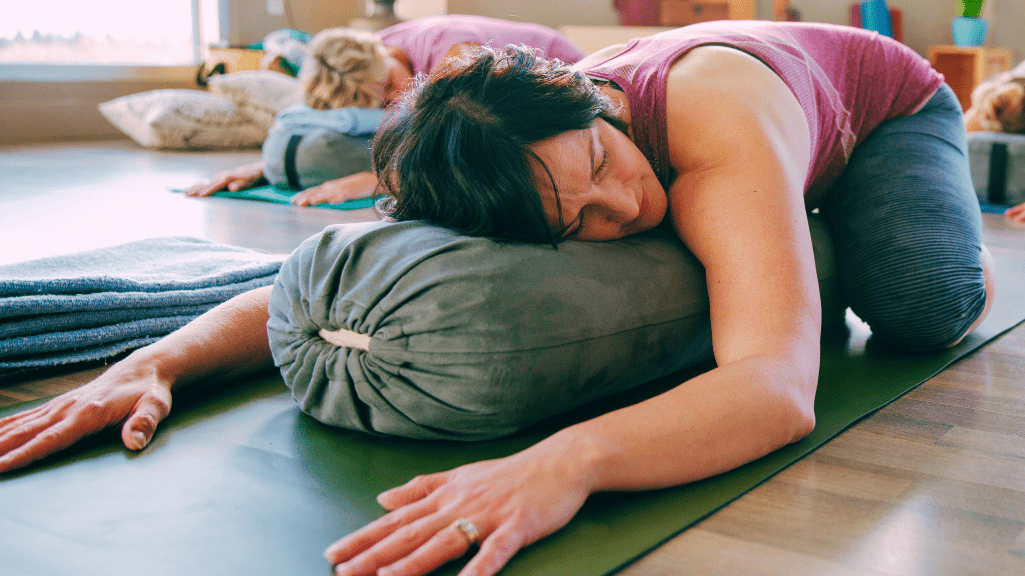
Description
Restorative yoga relies heavily on props such as blankets, bolsters, and straps to support the body while holding poses for extended periods. This method creates a soothing environment that deeply relaxes both muscles and the mind. Yoga after workout in this form is perfect for winding down after rigorous physical exertion.
Chart: Yoga Styles for Post-Workout Recovery
| Yoga Style | Flexibility | Deep Tissue Recovery | Relaxation | Circulation | Best For |
|---|---|---|---|---|---|
| Hatha | High | Moderate | High | Low | Beginners and general muscle recovery |
| Yin | High | Very High | Moderate | Low | Strength training or deep tissue care |
| Vinyasa | High | Low | Moderate | Very High | Active recovery, maintaining movement |
| Restorative | Moderate | Low | Very High | Low | Deep relaxation and stress relief |
Choosing the Right Style of Yoga After a Workout
Each type of yoga after workout serves a distinct purpose, offering unique benefits for recovery. Whether you need gentle stretches to restore flexibility, active movement to reduce stiffness, or deep relaxation to soothe your nervous system, there is a style to meet your needs.
For beginners, Hatha yoga provides a simple, slow-paced introduction to post-workout recovery, whereas Yin yoga focuses on deeper tissue restoration. Those who enjoy active movement can benefit from Vinyasa yoga, which maintains flexibility with gentle, continuous movement. Meanwhile, Restorative yoga offers a passive approach for complete physical and mental relaxation.
Ultimately, the right choice of yoga depends on your fitness goals, the intensity of your workouts, and how much time you need to recover. By integrating these styles into your routine, you can optimize recovery, reduce injury risks, and improve both physical and mental well-being.
Why Yoga After Workout is Effective
Yoga has become a vital part of recovery for fitness enthusiasts, athletes, and anyone striving for better physical and mental well-being. The benefits extend far beyond simple stretching, as it integrates physical, mental, and emotional restoration to optimize the body’s natural healing process. Understanding the science behind yoga helps explain why it has become a powerful tool for recovery and injury prevention. Let’s explore how and why yoga after workout is effective in supporting both muscle restoration and overall performance.
Muscle Recovery
One of the most significant reasons to incorporate yoga after workout into your routine is its ability to support muscle recovery. After intense exercise, muscles become tense and fatigued, which can lead to soreness and stiffness. Yoga involves gentle stretches and poses that target these muscles, helping them to release tension and relax.
Description
During a workout, muscles contract and strain, resulting in microscopic tears that need to be repaired. Yoga after workout aids in this process by increasing blood flow to these areas, delivering oxygen and essential nutrients needed for recovery. The controlled movements allow muscles to stretch gradually, easing tension and promoting healing.
Benefits
- Enhances blood circulation, helping to flush out metabolic waste such as lactic acid.
- Facilitates quicker muscle healing by maintaining a steady flow of nutrients to affected areas.
- Reduces post-workout soreness and accelerates recovery by preventing muscle tightness.
Preventing Injury
Yoga also plays a critical role in preventing injuries. Intense workouts can put considerable stress on joints, ligaments, and tendons, increasing the risk of overuse injuries. Post-workout yoga focuses on controlled, intentional movements that improve flexibility and body alignment, thereby reducing the likelihood of injury.
Description
Stretching after a workout ensures that the muscles and connective tissues remain flexible and less prone to strain. Yoga involves poses that emphasize proper alignment, which strengthens the body’s ability to handle physical stress. By focusing on slow, deliberate movements, it helps balance strength and flexibility, protecting the body from future injuries.
Benefits
- Helps maintain optimal joint mobility, reducing the risk of overuse injuries.
- Encourages proper body mechanics, improving posture and alignment during workouts.
- Reduces muscle imbalance, which is a common cause of injuries in strength training.
Mind-Body Connection
Yoga is not just about physical recovery; it also enhances the mind-body connection. Integrating breath with movement promotes a holistic approach to healing, improving both mental and physical performance. This connection plays a significant role in managing stress and creating a calming effect post-workout.
Description
Mindfulness during yoga encourages individuals to focus on their breath while moving through poses. This practice helps create a deeper awareness of how the body feels and functions after exercise. By strengthening the mind-body connection, yoga when done after workout allows for a more thoughtful recovery process, encouraging self-care and relaxation.
Benefits
- Reduces mental stress and promotes relaxation through breath control and intentional movement.
- Enhances focus and emotional balance, creating a better sense of well-being.
- Improves overall performance by fostering greater body awareness and sensitivity to movement.
How Long to Hold Poses?
Holding yoga poses for a specific amount of time can significantly impact recovery. Ideally, post-workout yoga sessions should involve holding each pose for 1-2 minutes to achieve deep muscle relaxation without overexertion. This timeframe allows muscles to stretch gradually, ensuring they do not become strained further.
Description
Holding poses for extended periods promotes lengthening of muscles and improves flexibility. The slow, controlled nature of post-workout yoga encourages relaxation at a pace that doesn’t push beyond the body’s limits. By dedicating time to long-held poses, the body can experience true restoration.
Benefits
- Allows muscles to release tension thoroughly, minimizing post-exercise tightness.
- Reduces strain on connective tissues by offering extended stretches.
- Enhances flexibility, making future workouts more effective and less stressful.
Why Yoga After Workout is a Holistic Approach
Yoga after workout offers a holistic recovery solution that addresses both the physical and mental aspects of recovery. By integrating intentional movement, controlled breath, and mindful attention, it serves as a powerful tool for restoring balance. Whether you are an athlete pushing limits or someone striving for better overall fitness, yoga ensures that your body and mind are prepared for both immediate and long-term well-being.
Essential Yoga After Workout Exercises for Recovery and Flexibility
Yoga is a powerful practice that complements the physical exertion of workouts by aiding in recovery and enhancing overall well-being. Incorporating specific yoga poses after yoga after workout not only promotes flexibility but also helps soothe muscles and reduce post-exercise discomfort. Below is a detailed guide to various yoga exercises that can be seamlessly integrated into your post-workout routine.
Detailed Yoga Poses for Recovery
1. Child’s Pose (Balasana)
Steps:
- Start in a kneeling position and sit back onto your heels.
- Stretch your arms forward and lower your chest towards the mat.
- Hold for 1-2 minutes.
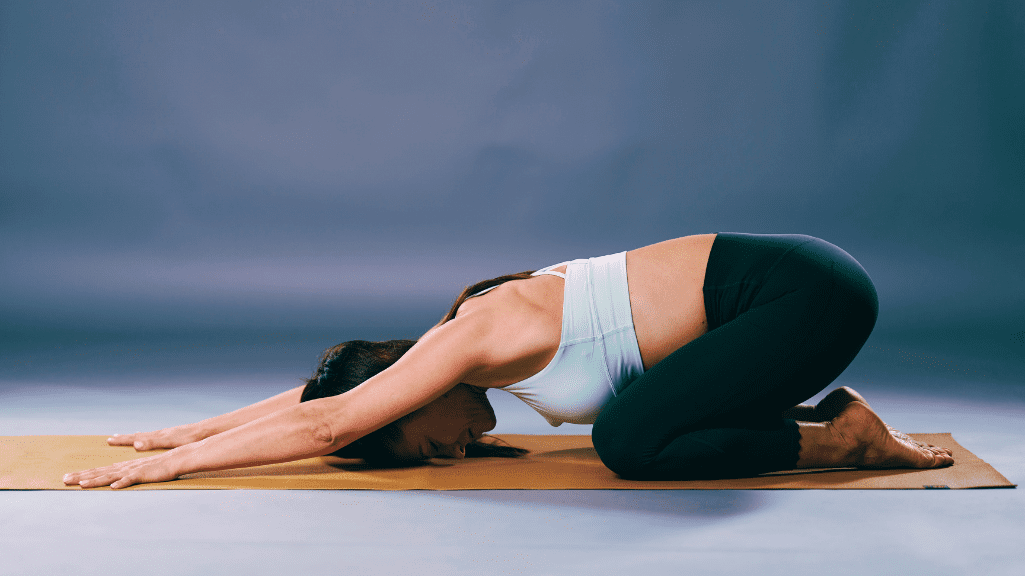
Benefits:
Child’s Pose calms the nervous system while gently stretching the lower back, hips, and shoulders. It provides a grounding sensation that helps relieve tension and encourages relaxation after intense physical activity.
2. Downward-Facing Dog (Adho Mukha Svanasana)
Steps:
- Begin in a plank position and push your hips upwards while keeping your heels down towards the floor.
- Hold for 5-10 breaths.
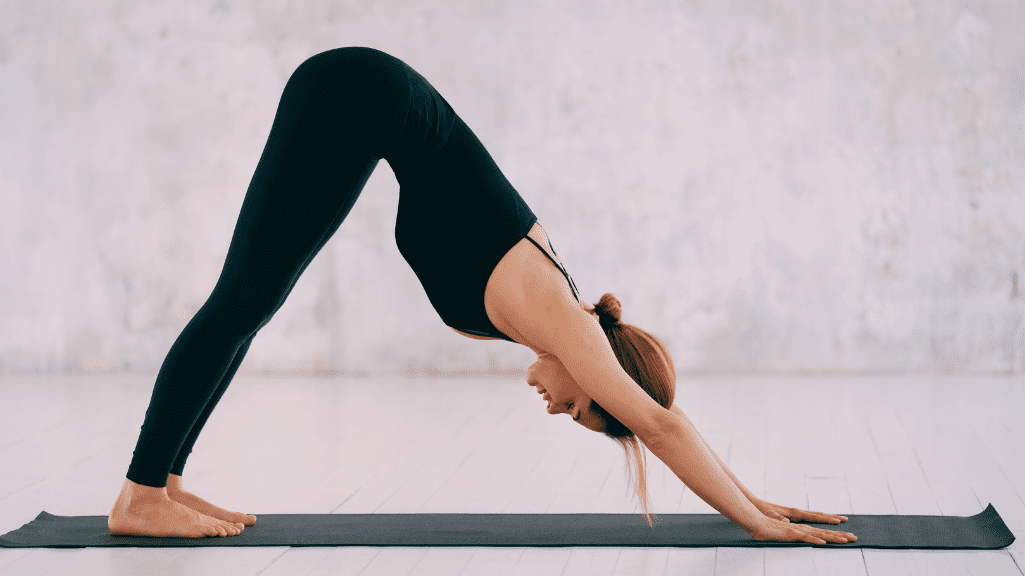
Benefits:
Downward-Facing Dog lengthens the entire posterior chain, including the hamstrings, calves, and spine. This helps relieve stiffness from lower body workouts, promoting flexibility and reducing tightness in the lower body.
3. Warrior II (Virabhadrasana II)
Steps:
- Stand with feet wide apart, bend one knee, and extend your arms outward while keeping your core engaged.
- Hold for 30 seconds on each side.
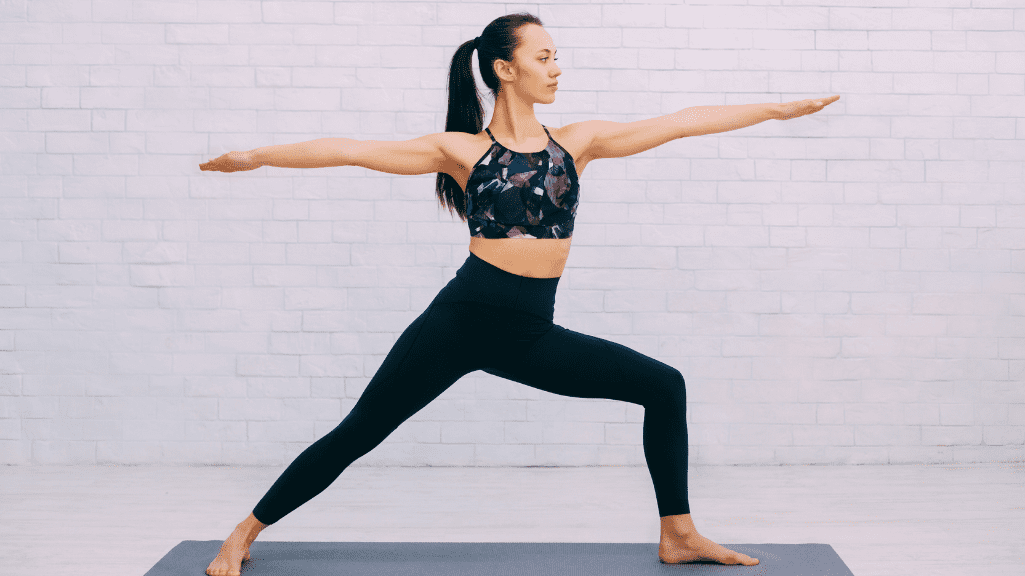
Benefits:
Warrior II strengthens and stretches the legs, hips, and shoulders, offering a balanced combination of flexibility and strength. It promotes a sense of stability while encouraging deep muscle engagement.
4. Seated Forward Bend (Paschimottanasana)
Steps:
- Sit on the mat with legs extended forward. Reach forward toward your feet while keeping the back straight.
- Hold for 1-2 minutes.
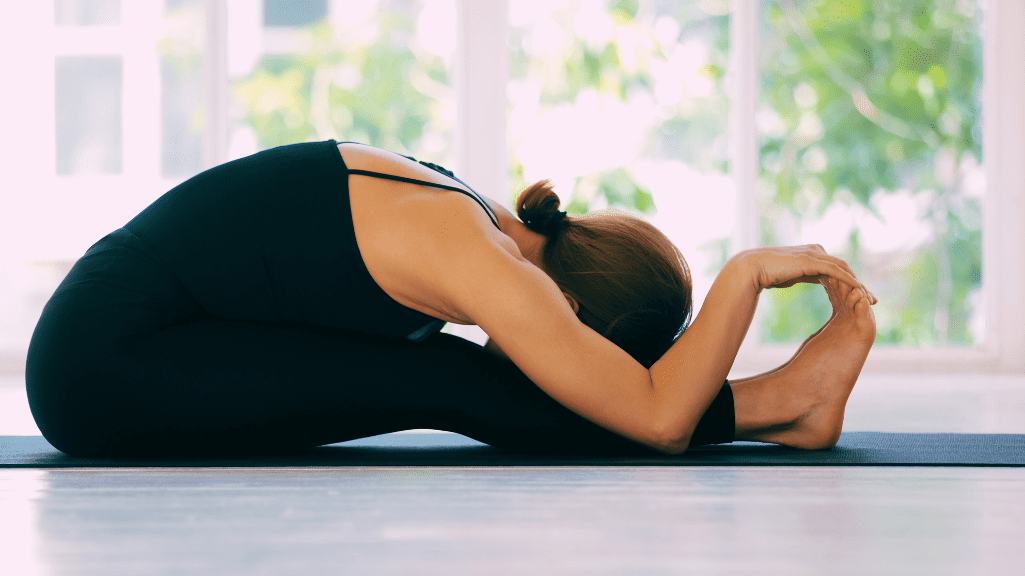
Benefits:
Seated Forward Bend deeply stretches the hamstrings, calves, and spine. This pose improves flexibility while helping to reduce muscle tightness, especially after strength-based workouts.
Incorporating Breathwork
To fully integrate relaxation into your post-workout recovery, end each yoga session with 5-10 minutes of deep breathing exercises such as diaphragmatic breathing or alternate nostril breathing. These techniques help ground the mind and body, promoting deep relaxation and aiding in faster recovery.
By incorporating these targeted yoga exercises, you not only facilitate physical healing but also enhance your overall mental and emotional well-being. Whether after an intense gym session or a moderate workout, yoga after workout plays a crucial role in optimizing recovery.
Emphasizing the Benefits of Regular Yoga After Workout
Incorporating yoga after workout into a fitness routine has become increasingly popular due to its numerous benefits for both physical recovery and overall well-being. While it has been established that yoga after a workout helps in reducing muscle tension, improving flexibility, and promoting mental clarity, understanding the deeper reasons behind its effectiveness solidifies its place in post-exercise recovery. Below, we summarize the key points discussed throughout the article, highlighting why incorporating yoga regularly can significantly improve performance and recovery. Additionally, we’ll address some of the most frequently asked questions surrounding this practice.
Summary of Key Points
- Benefits of Yoga After a Workout
- Enhances muscle recovery by reducing tension and increasing blood flow.
- Improves flexibility, which is crucial for maintaining mobility and reducing injury risk.
- Helps calm the nervous system, promoting mental clarity and emotional balance.
- Provides a balanced approach to injury prevention and performance enhancement through breath control and proper alignment.
- Types of Yoga After Workout
- Hatha Yoga focuses on gentle, restorative poses ideal for beginners and those seeking deep relaxation.
- Yin Yoga targets deep tissues like ligaments and fascia, providing thorough recovery for those with intense strength-training sessions.
- Vinyasa Yoga offers a more dynamic flow, combining flexibility and light movement to prevent stiffness.
- Restorative Yoga emphasizes passive poses, particularly beneficial after high-intensity workouts.
- Practical Yoga Exercises
- Poses like Child’s Pose, Downward-Facing Dog, Warrior II, and Seated Forward Bend cater to various areas of the body for post-workout relief.
- Each pose contributes uniquely to flexibility, injury prevention, and muscle recovery.
- Scientific Evidence
- Research shows that yoga aids in reducing muscle soreness and supports faster recovery through controlled stretching and breathwork.
- Regular post-workout yoga enhances blood flow, reducing inflammation and promoting healing.
Importance of Regular Yoga After Workout
While yoga after a workout offers immediate relief, the greatest benefits come from consistent practice. Incorporating yoga regularly into your fitness routine can lead to:
- Increased Flexibility: Long-term flexibility reduces the risk of injuries, especially when participating in intense physical activities.
- Improved Recovery: Regular sessions enhance the body’s ability to recover more effectively from strenuous workouts.
- Better Mental Health: Yoga promotes mindfulness, which translates into reduced stress and better emotional well-being post-exercise.
The combination of physical and mental recovery is a cornerstone of peak performance, and yoga serves as an effective tool to achieve this balance.
FAQ Section
Q: How often should I practice yoga after a workout for optimal recovery?
A: It is recommended to incorporate yoga after workout at least 2-3 times a week to see consistent recovery and performance benefits. However, depending on the intensity of your workouts, more frequent sessions may yield better results.
Q: Can beginners perform yoga after a workout, even if they’ve never practiced yoga before?
A: Yes, beginners can absolutely perform yoga after workout. Starting with gentle and restorative styles like Hatha or Restorative Yoga is ideal for beginners to ease into the practice.
Q: Is yoga after workout sufficient for post-exercise recovery, or should I still do traditional cool-downs?
A: While yoga after your workout enhances flexibility and muscle recovery, it complements traditional cool-down routines well. Together, they provide a comprehensive approach to recovery.
Q: How long should I hold yoga poses after a workout?
A: Holding yoga poses for 1-2 minutes provides effective muscle relaxation without straining the body further. This allows for deeper stretching and recovery.
Q: Can yoga after workout help prevent injuries?
A: Yes, yoga after exercising focuses on proper body alignment and breath control, significantly reducing the risk of injuries by promoting balance and flexibility.
By incorporating yoga consistently, individuals can experience long-term improvements in both physical recovery and mental well-being. Whether you’re an elite athlete or someone new to fitness, integrating yoga into your post-workout routine is an excellent step towards enhancing overall health.


